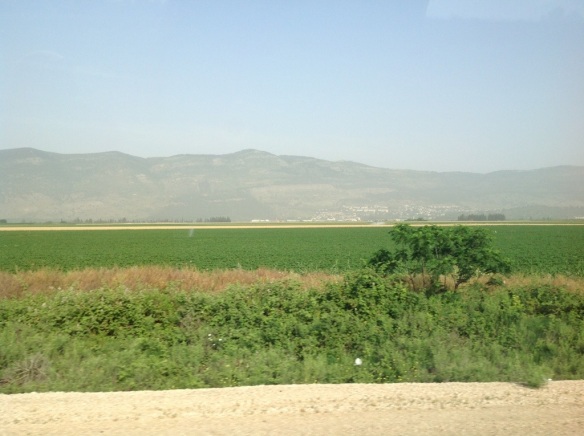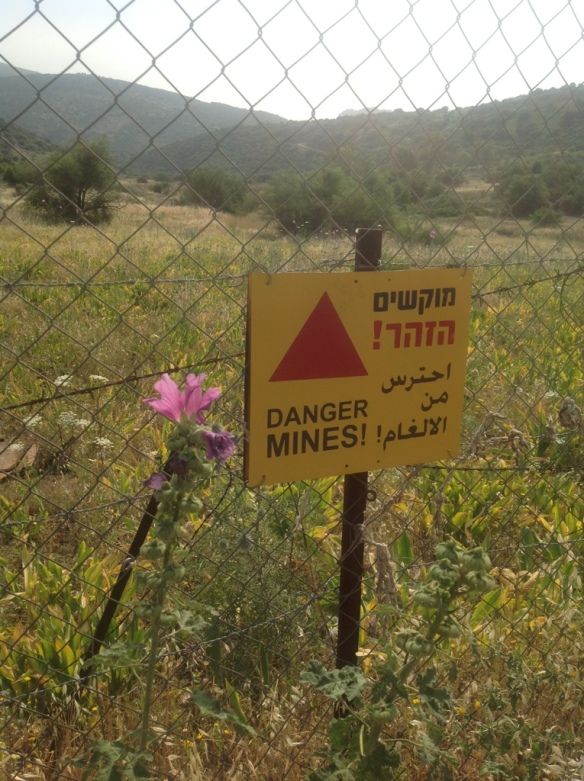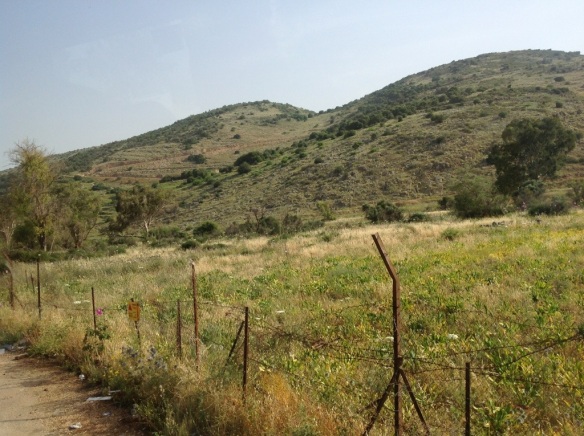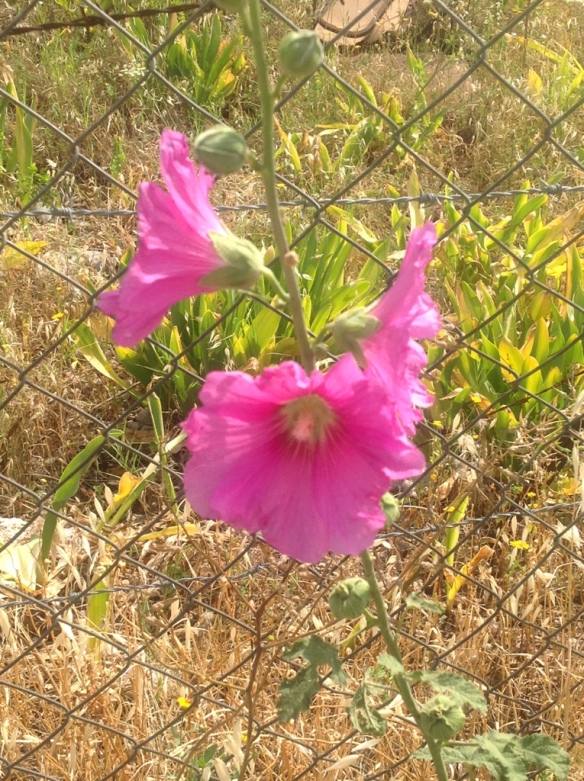This morning we drove North from our hotel at the kibbutz Kfar Blum past the Sea of Galilee to the narrow region of Israel where Lebanon is to the West, and Syria is to the East.
This area is a distinct change in topography and vegetation from the more desert regions South of Galilee. The land becomes very mountainous, it is an old volcanic range. Called the Golan Heights, this is currently an area with tremendous terraced farming and spectacular vineyards. This area is also the southern tip of the Fertile Crescent, there is much more water here and the temperature variations along with the soil makes for great farming.
The northern most part of the Golan Heights in Israel is Mt. Hermon. This mountain is also the area were the borders of Lebanon and Syria and Israel meet.
Here is the view looking West where the Lebanon border is at the ridge of the mountain you see in the background.
So, first to talk about Lebanon. We drove up to an area where the Lebanon border was visible and we got out of our bus, on the side of the road to talk with Colonel Kobi Marom.
We were a little early for Kobi so, we got out of the bus and our tour guide began to explain to us about the presence of old land mines which make it unsafe to walk around in these areas where the borders between these three countries have been fought over for the last 50 years.
Our guide, Duron, explained that these are smart fences each section is electrified. Not to shock you, but rather to let the military know if you touch the fence. It sends a message to their headquarters. If you cut the fence, it sends another message and soldiers will be deployed to hunt you down led by a Bedouin soldier because they are excellent trackers.
The message here… don’t even touch the fence.
After a short while, Kobi arrived and we gathered around him to learn about these delicate borders. Kobi served in the IDF (Israeli Defense Force) as a commander in many posts and then became Regimental Commander. He is now in the reserves.
Kobi explained much history about the battles that have been fought between the Israeli army and the Hezbollah. As we stared out onto the valley he explained that the village of white buildings we could see was an Allewite village. The Allewite are a particular ethnic group in the area, that are Shia Muslim but would prefer to be considered Israeli and not Lebanese. So, after the war, they became Israeli citizens and lived happily and wanted to expand their village a little to the north. Israel said sure, and only later when the UN came to mark the lines between Lebanon and Israel did they discover that the village now sits in two countries.

So, some of these Allewite Israeli citizens live in Lebanon… This is difficult and confusing.
The Hezbollah have been very agressive at this border and caused all kinds of problems, but Kobi explained that in his view, they are behaving much more cautiously right now for two reasons. One: the last time they acted against Israel attacked them so swiftly and severely that their infrastructure was demolished and they know that any even small attack will result in the same kind of response from Israel. Two: the Hezbollah have much more power in Lebanon politically and they have more to loose if they get into a fight with Israel. Before they were a rebel group without much to loose, now they have some power and authority and they are interested in preserving that.
So Israel has to make sure that they put up a big threat of retaliation to keep the Hezbollah from attacking and they want to make sure that Hezbollah has limited military capabilities. The danger is that they do have rockets, long and short range. They could easily fire rockets from this border and hit Tel Aviv. So Israel has to pay attention to the Hezbollah behavior and who of their allies might sell them bombs… Iran and the Syrians.
As we got back on the bus, I was aware of the ironic beauty of wildflowers growing along the “smart fence” and mine field. Nature will find a way, won’t she…







I’m very much enjoying reading your thoughts on traveling through Israel. Great photos as well. Don’t forget to get some shots of yourself in these scenes!
read part II, i get a picture of me in there.
Nice! Great blog! I really enjoyed your descriptions of the experience.
More to come… I’ve just been so overwhelmed in Jerusalem.